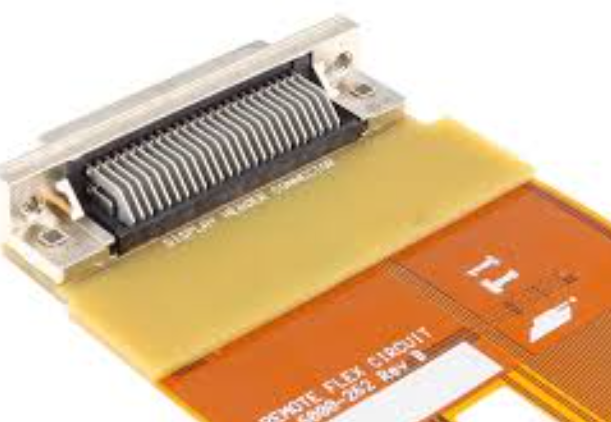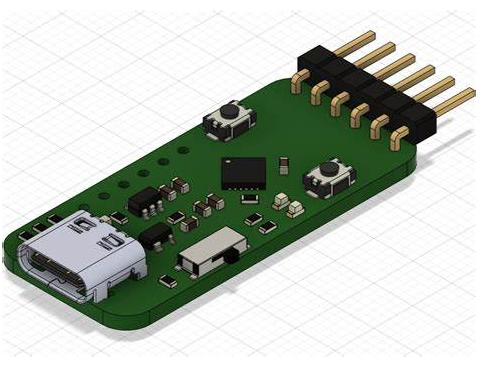Flex pcb hs code
Understanding The HS Code For Flex PCBs: A Comprehensive Guide
The Harmonized System (HS) Code is an essential tool in international trade, serving as a standardized numerical method of classifying traded products. For businesses involved in the manufacturing and distribution of flexible printed circuit boards (PCBs), understanding the appropriate HS Code is crucial. This code not only facilitates the smooth movement of goods across borders but also ensures compliance with international trade regulations. As the global demand for electronic devices continues to rise, the significance of accurately classifying flex PCBs cannot be overstated.
Flexible PCBs, known for their versatility and adaptability, are integral components in a wide range of electronic devices, from smartphones to medical equipment.
These circuits are designed to bend and flex, allowing for innovative product designs and enhanced functionality. Given their unique properties and applications, it is imperative to classify them correctly under the HS Code system to avoid potential trade barriers and ensure seamless transactions.
The HS Code for flex PCBs typically falls under Chapter 85 of the Harmonized System, which covers electrical machinery and equipment.
More specifically, flex PCBs are often classified under heading 8534, which pertains to printed circuits. However, it is important to note that the exact classification can vary depending on the specific characteristics and intended use of the flex PCB. For instance, factors such as the presence of additional components or the level of assembly may influence the precise subheading under which a flex PCB is categorized.
To determine the correct HS Code for a specific flex PCB, businesses must consider several key aspects.
Firstly, the material composition of the PCB, including the type of substrate and conductive materials used, can impact its classification. Additionally, the level of assembly, whether the PCB is a bare board or includes mounted components, plays a significant role in determining the appropriate code. Furthermore, the intended application of the flex PCB, such as its use in consumer electronics or industrial machinery, may also influence its classification.
Accurate classification under the HS Code system is vital for several reasons.
Primarily, it ensures compliance with international trade regulations, thereby minimizing the risk of customs delays and penalties. Moreover, it facilitates the accurate calculation of import duties and taxes, which can significantly impact the overall cost of goods. By correctly classifying flex PCBs, businesses can also take advantage of preferential trade agreements and benefit from reduced tariffs, ultimately enhancing their competitiveness in the global market.
In addition to compliance and cost considerations, proper classification under the HS Code system aids in the collection of trade statistics.
These statistics are invaluable for governments and organizations in analyzing trade patterns, assessing economic performance, and formulating trade policies. Consequently, businesses that accurately classify their products contribute to a more comprehensive understanding of global trade dynamics.
In conclusion, understanding the HS Code for flex PCBs is a critical aspect of international trade for businesses in the electronics industry. By accurately classifying these products, companies can ensure compliance with trade regulations, optimize their cost structures, and contribute to the broader analysis of global trade trends. As the demand for flexible PCBs continues to grow, the importance of mastering the intricacies of the HS Code system will only become more pronounced, underscoring the need for businesses to stay informed and proactive in their approach to international trade.

Navigating International Trade: Flex PCB HS Code Explained
In the realm of international trade, understanding the Harmonized System (HS) code is crucial for businesses dealing with the import and export of goods. This is particularly true for industries involved in the production and distribution of flexible printed circuit boards (PCBs), which are integral components in a wide array of electronic devices. The HS code serves as a standardized numerical method of classifying traded products, facilitating the smooth operation of global commerce by ensuring that all parties involved in the trade process are on the same page regarding the nature of the goods being exchanged.
Flexible PCBs, known for their versatility and ability to conform to various shapes, are increasingly in demand across numerous sectors, including consumer electronics, automotive, and medical devices.
As such, accurately identifying the appropriate HS code for these products is essential for manufacturers and distributors to avoid potential delays and complications at customs checkpoints. The HS code for flexible PCBs typically falls under the broader category of printed circuits, which is classified under Chapter 85 of the Harmonized System. More specifically, flexible PCBs are often categorized under the subheading 8534.00, which pertains to printed circuits.
However, it is important to note that the exact HS code may vary depending on the specific characteristics and applications of the flexible PCB in question.
For instance, certain modifications or additional features may necessitate a different classification. Therefore, it is advisable for businesses to consult with customs authorities or trade experts to ensure the correct HS code is applied to their products. This not only helps in avoiding potential legal issues but also ensures that the correct tariffs and duties are applied, thereby preventing unexpected financial burdens.
Moreover, understanding the HS code is not only beneficial for compliance purposes but also plays a significant role in strategic business planning.
By accurately classifying their products, companies can gain insights into market trends and demand patterns, as the HS code system is used globally to track trade statistics. This data can be invaluable for businesses looking to expand into new markets or optimize their supply chain operations. Additionally, having a clear understanding of the HS code can aid in negotiating trade agreements and navigating the complexities of international trade regulations.
In conclusion, the significance of the HS code in the context of flexible PCBs cannot be overstated. As global trade continues to evolve, the ability to accurately classify and document products is essential for businesses seeking to maintain a competitive edge. By ensuring that the correct HS code is applied to their flexible PCBs, companies can not only facilitate smoother transactions but also leverage valuable trade data to inform their strategic decisions. As such, staying informed about the nuances of the HS code system and seeking expert guidance when necessary is a prudent approach for any business involved in the international trade of flexible PCBs.

The Importance Of Correct HS Code Classification For Flex PCBs
In the realm of international trade, the correct classification of goods is paramount to ensuring smooth transactions and compliance with global regulations. One area where this is particularly crucial is in the classification of flexible printed circuit boards (PCBs) under the Harmonized System (HS) code. The HS code is an internationally standardized system of names and numbers for classifying traded products, and it plays a vital role in the import and export process. For businesses dealing with flex PCBs, understanding and applying the correct HS code is essential for several reasons.
Firstly, the accurate classification of flex PCBs under the appropriate HS code ensures compliance with international trade laws.
Each product that crosses international borders must be classified under a specific HS code, which determines the tariffs, duties, and taxes applicable to that product. Misclassification can lead to significant financial penalties, delays in shipment, and even legal issues. Therefore, businesses must exercise due diligence in determining the correct HS code for their flex PCBs to avoid these potential pitfalls.
Moreover, the correct HS code classification facilitates efficient customs clearance.
Customs authorities rely on HS codes to assess the nature of the goods being imported or exported. When flex PCBs are accurately classified, it streamlines the customs process, reducing the likelihood of inspections and delays. This efficiency is particularly important in industries where time-to-market is critical, as any delay in the supply chain can have cascading effects on production schedules and customer satisfaction.
In addition to compliance and efficiency, the correct classification of flex PCBs under the HS code can also impact a company’s competitive advantage.
By ensuring that their products are classified correctly, businesses can avoid unnecessary tariffs and take advantage of preferential trade agreements. These agreements often provide reduced tariffs or duty-free access to certain markets, which can significantly lower costs and enhance profitability. Consequently, companies that invest in accurate HS code classification can position themselves more favorably in the global marketplace.
Furthermore, the correct HS code classification is essential for accurate trade statistics and market analysis.
Governments and international organizations rely on HS codes to collect data on trade flows, which in turn informs economic policy and business strategy. By ensuring that flex PCBs are correctly classified, businesses contribute to the accuracy of this data, which benefits the broader industry by providing insights into market trends and opportunities.
To achieve accurate HS code classification for flex PCBs, businesses should consider several best practices.
Engaging with customs brokers or trade compliance experts can provide valuable guidance and ensure that the classification process is thorough and precise. Additionally, staying informed about updates to the HS code system is crucial, as changes can occur that may affect the classification of certain products. By maintaining a proactive approach to HS code classification, businesses can mitigate risks and capitalize on opportunities in the international trade arena.
In conclusion, the importance of correct HS code classification for flex PCBs cannot be overstated. It is a critical component of compliance, efficiency, competitive advantage, and accurate market analysis. By prioritizing accurate classification, businesses can navigate the complexities of international trade with confidence and success.

Common Mistakes In Assigning HS Codes To Flex PCBs And How To Avoid Them
Assigning the correct Harmonized System (HS) code to flexible printed circuit boards (PCBs) is a critical task in international trade, as it ensures compliance with global customs regulations and facilitates smooth cross-border transactions. However, this process is often fraught with challenges, leading to common mistakes that can result in delays, penalties, or even legal issues. Understanding these pitfalls and learning how to avoid them is essential for businesses involved in the manufacturing, distribution, or importation of flex PCBs.
One prevalent mistake is the misclassification of flex PCBs under incorrect HS codes
This often occurs due to a lack of understanding of the specific characteristics and functions of the product. Flex PCBs, known for their flexibility and ability to fit into compact spaces, are distinct from rigid PCBs and other electronic components. Therefore, they require a specific classification that accurately reflects their unique properties. Misclassification can lead to incorrect duty assessments and potential fines, making it crucial for businesses to thoroughly understand the product specifications and consult the latest HS code directories.
Another common error is the failure to stay updated with changes in HS codes.
The World Customs Organization (WCO) periodically revises the HS nomenclature to accommodate technological advancements and changes in trade patterns. Businesses that do not keep abreast of these updates risk using outdated codes, which can cause discrepancies in customs documentation. To avoid this, companies should regularly review the WCO updates and adjust their classification practices accordingly. Subscribing to industry newsletters or engaging with trade compliance experts can also provide timely information on any changes.
Additionally, overlooking the importance of detailed product descriptions can lead to incorrect HS code assignments.
Customs authorities rely heavily on product descriptions to verify the accuracy of the declared HS code. Vague or incomplete descriptions can result in misinterpretation and subsequent misclassification. To prevent this, businesses should ensure that their product descriptions are comprehensive, highlighting key features such as material composition, intended use, and any unique attributes that distinguish flex PCBs from other electronic components.
Furthermore, relying solely on automated classification tools without human oversight can be a significant pitfall.
While these tools can provide a quick reference, they may not account for the nuances of specific products or recent changes in HS codes. Human expertise is invaluable in interpreting complex product details and ensuring accurate classification. Therefore, businesses should combine automated tools with expert analysis to enhance the accuracy of their HS code assignments.
To mitigate these common mistakes, companies should invest in training programs for their staff, focusing on the principles of HS classification and the specific requirements for flex PCBs.
This education can empower employees to make informed decisions and reduce the likelihood of errors. Additionally, seeking guidance from customs brokers or trade compliance consultants can provide valuable insights and support in navigating the complexities of HS code assignment.
In conclusion, while assigning HS codes to flex PCBs can be challenging, understanding and addressing common mistakes can significantly improve compliance and efficiency in international trade. By staying informed about HS code updates, providing detailed product descriptions, combining automated tools with expert analysis, and investing in staff training, businesses can avoid the pitfalls of misclassification and ensure smooth customs processes.







